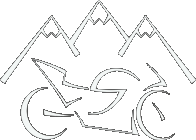
Originally Posted by
dirkterrell

I'm not religious about the covering or not covering the brake lever. What's important is how to use the lever. If covering works for you, do it. If not, don't worry about it. Casey hit the important point: being comfortable in controlling the bike by practicing. You don't want to have to figure out how to do something in the second or two that you need to make a decision. It needs to be instinctual.
Instruction from experienced riders can be very helpful. Riding at a a place like IMI when it's not too crowded, and working with someone will allow you to practice things without having to worry about other things like cars. Start easy and progressively increase so that you become comfortable with interpreting what the bike is telling you. If you are smooth with your inputs to the bike and you understand what the bike is doing, you'll learn how to use everything the bike can do for you in an emergency situation. If you grab a handful of brake while leaned over because you panic, you'll end up on your head.
On the street, even at an elevated pace, I rarely use the brake. I recommend you try it at a comfortable pace, and then slowly and methodically pick up the pace until you start to feel the urge to use the brake. Stay at that pace for a while until you no longer feel the need to go for the brake. This will teach you to use the engine braking properly. A lot of new riders that I have helped over the years have had a tendency to be geared too high going into corners. Keeping the RPMs up will help you in a number of ways in a corner but mainly it gives you the ability to make speed adjustments that keep the bike much more stable than when you have to use the brakes.
But there will be times where you'll need to get on the brakes while leaned over. It's really not a big deal once you understand how to do it and others have mentioned the basic ideas. What you have to do is manage that contact patch properly. If you're on the edge of the tire, you're using the majority of the friction that the contact patch can give you for the turning force. You have to be very delicate on the lever. If you only need to scrub a little speed, you might be better off using the back brake, again smoothly. You just have to be careful not to lock it up, because if you do, you stand a pretty good chance of highsiding. Again, practice it in a methodical manner. But you might need to use the front at some point, so you should practice that. Learn what the bike feels like as you apply the front brake while leaned over. Casey described what happens, now go out and see what it feels like. Empty parking lots work great.
The biggest thing that will help you in braking is learning how to properly apply the brakes. A lot of newer riders tend to treat them as an on-off switch but that is a sure way to end up surfing the asphalt. The input controls, steering/brakes/gas, should be thought of as dials that you ramp up and ramp down. In braking, you will find that a gradual apply and release action keeps the bike much more stable than an instant on and off. As an example, if you're on the brakes with the bike straight up for 5 seconds, after the first second you might be at 30% braking, after two seconds 80%, at three seconds 100%, after four seconds, 30% and back to 0 at five seconds. The slow application allows the suspension to deal smoothly with the back to front weight transition and give the tire time to bite into the road, giving you more braking power. If you instantly go to 100%, the front tire is being asked to grip harder but it isn't being pushed into the road as hard and you'll probably lock it up. Practice that gradual application until it becomes second nature. Try braking with just your index finger. It will give you all the power you need to do a stop but help you avoid ramping up too quickly. Even when racing, trail braking hard up to the apex, I only use one finger.
Now, how about doing the above when you're leaned over? It's the same idea, except that now we're balancing the friction needed for turning with the friction we need for braking. Obviously you can't go to 100% when you're on the edge of the tire. How much can you go? That depends on the conditions and your tires. With heated up race slicks you have quite a bit more than you have on cold sport-touring tires. If you're riding on the street, you should never put yourself in the position of having to know exactly where that limit is. You should be riding at a pace that leaves you plenty of room to react and stop before you need to worry about your braking limit at the edge of the tire. On the track, you can explore that limit more safely. But the basic idea is still there: smoothly apply the brake, ramping up to the maximum and ramping back down. Learn to do the same thing with the throttle.
Once you master smooth inputs, you'll have much better control over your bike and be able to deal with situations as they arise. Modern bikes and tires can do really amazing things if you know how to make smooth inputs to the bike. Practice and learning from experienced riders will get you there.
Dirk




 Reply With Quote
Reply With Quote




